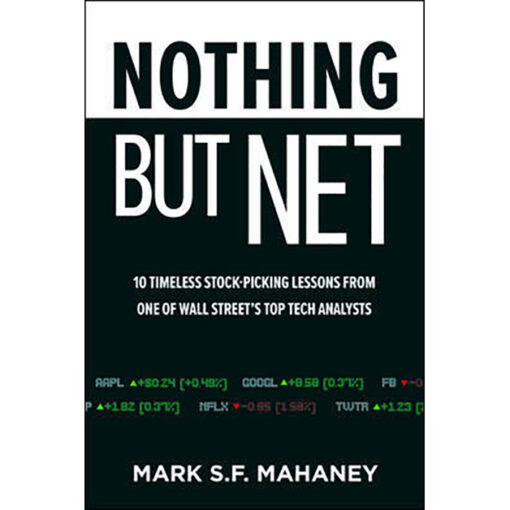[ad_1]
Capitalists once invested and administered their own money. But beginning in the late 19th century, independent managers progressively took charge, first of the businesses to which the capital was tied and later of the funds themselves.
In what is now a core feature of financial capitalism, intermediaries run modern economies. Laissez-faireism has created a system wherein brokers and promoters drive the markets. Private markets, in particular, have come to exemplify this trend.
Agency-Based Market Structure
In the early stages of this transformation, one tier of financiers — typically institutional investors and fund managers — assumed control of the owners’ assets. Many more operators and representatives have since emerged with the financialization of the economy.
Several layers of agents, as outlined in the following chart, are active in private markets, though the list is not exhaustive.
The Agency Model of Private Capital Markets
Capital Owners
(Pensioners, Insurance Plan-Holders, Depositors, etc.)
| Role | Types of Participants | |
| Layer 1 | Fund Providers, or Limited Partners (LPs) |
Pension Funds, Insurers, Banks, Endowments, Sovereign Wealth Funds, Wealth Managers, Family Offices, Secondary LPs |
| Layer 2 | Diversified LPs | Funds of funds |
| Layer 3 | Fundraisers, Gatekeepers, Administrators |
Placement Agents, Portfolio Management Advisers, Offshore Fund Administrators and Custodians |
| Layer 4 | Fund Managers, or General Partners (GPs) |
Funds in Private Equity, Infrastructure, Real Estate, Venture Capital, etc. |
| Layer 5 | Loan Providers | Banks, Private Debt Funds (GPs), Bond Investors |
| Layer 6 | Deal Brokers and Introducers | Investment Banks, M&A Boutiques, Accountants |
| Layer 7 | Due Diligence Advisers | Lawyers, Consultancies, Accountants, Executive Search Firms |
| Layer 8 | Business Managers | Corporate Executives, Interim Managers, Turnaround Specialists |
Real Assets and Portfolio Companies
Vertical Integration and Horizontal Diversification
Fund management and advisory activities are lucrative sources of fees. To increase revenue, fund managers (Layer 4) at first went downstream, developing and pushing transactions (Layer 6) to guarantee proprietary deals. But fee generation in the M&A trade is highly unpredictable and fluctuates with the economic cycle. For that reason, deal origination is now essentially outsourced or intermediated.
More dependable strategies focus on captive assets — those held in portfolios, or layers 7 and 8. Through the operational management of investee companies, agents charge various fees. In principle, private equity (PE) firms are contractually obligated to distribute most or all of these fees to LP investors, but not all comply.
For example, KKR raised eyebrows for not dispersing to LPs the bulk of fees charged by its advisory unit, Capstone. KKR claimed Capstone was not an affiliate but an independent consulting firm, even though it worked exclusively on KKR’s portfolio assets.
Eventually, PE firms moved up and across the supply chain, where ready access to capital has ensured the stream of commissions (layers 1, 2, and 5). Since the global financial crisis (GFC), the largest firms have acquired assorted LP entities and credit activities. Some have also devised internal liquidity solutions, such as Blackstone’s secondaries platform.
Once capital is secured, PE firms can complement their fees by entering adjacent segments of the alternatives market. And when LP investors raised concerns about diminishing performance amid this expansion into real estate (RE), infrastructure, and even venture capital (VC), among other alternative sectors, PE firms weakened the LPs’ bargaining power by building permanent pools of capital.
Closing the Transactional Loop
Private markets are consolidating fast and from multiple angles, both at the fund manager and the capital provider ends, and through initiatives from the fund managers’ advisers.
As GPs strengthened their market position, institutional investors tried to replicate the PE groups’ expertise. First, LPs with close GP relationships were granted the right to co-invest, accessing deals directly without having to build in-house origination capabilities while avoiding management and performance fees.
But returns from co-investments were not on par with those from GP-funded transactions. Perhaps PE firms invite LPs to co-invest in only their most complex projects? That syndicated deals underperform GP-led ones indicates some form of adverse selection.
In a more recent phase, LPs bypassed GPs entirely by building direct investment teams and adopting the GP model without the punishing fee structure. This should benefit the LPs’ clients, such as pensioners in the case of retirement plan administrators and taxpayers for sovereign wealth funds.
LPs also moved downstream across several alternative segments. Infrastructure, RE, and PE are the most obvious targets: They provide the annual cash flows that institutions with regular capital calls require. BlackRock, Fidelity, and other asset managers have even entered the highly illiquid VC space with mixed results.
Before this LP-GP standoff, other intermediaries had sought to boost commissions. Banks were already active as deal advisers and lenders. Some established fund management and administrative solutions. Lazard, for instance, provides private capital advice. Mizuho offers private placement services through its Capstone Partners subsidiary — no relation to KKR’s consulting division. And Goldman Sachs has long participated in direct equity funding via its principal investing division.
Feasting on Fees
Thanks to these vertical and horizontal expansion strategies, fee arrangements have branched out. What intermediaries can expect to earn in the PE sector, in particular, is outlined in the table below.
Layers of Fees in Private Equity
| LP Management | Typically 1% levied on assets under management (AUM). Pension funds charge 0.4% to 0.8% per annum, but charge more for allocations to alternative assets. |
| Fund of Funds (Where Applicable) | This second layer of LP fees can add up to 1% per year. |
| Placement Agent* | Up to 1.5% of total capital commitments is charged in fundraising years. |
| GP Management | Annual commissions range from 1% to 2.5% of AUM depending on fund size, track record, and brand. |
| GP Performance | Once returns exceed the hurdle rate, carried interest ranges from 10% to 30% of capital gains. |
| Lending** | Fees charged to structure and amend loans. |
| Deal Brokerage | Extract between 3% and 5% of the deal size for trade and financial sales and up to 7% on initial public offerings (IPOs). |
| Due Diligence | Commissions for financial, tax, legal, commercial, and other services range from 3% to 5% of the transaction value. |
| GP Portfolio Monitoring | Advisory fees charged by GPs directly to their investees during the monitoring phase can easily add 1% of annual expenses to the equity portion of a portfolio. Contractually, most should be passed on to LPs. |
** Private debt fund managers do not only earn lending commissions. As GPs, they also charge LPs for management and performance fees.
While free-market advocates will claim that state intervention leads inevitably to government overreach, is overcharging pensioners any better than overtaxing citizens?
Total yearly commissions in PE depend on the use of M&A brokers, due diligence consultants, and gatekeepers, including placement agents — approximately 1 in 10 GPs employ their services according to PitchBook. This pyramidal fee accumulation grows taller once lenders charge PE-backed borrowers to arrange, syndicate, and refinance loans, and to obtain their consent to prepayments or to reset lending terms and covenants.
Including LPs’, GPs’ and their respective advisers’ contribution, annual fees exacted on PE-controlled assets can be as high as 10% and resemble the tithe in medieval times.
With the PE model’s high profitability, the industry’s ultimate development stage will inevitably feature leveraged buyouts of the fund managers themselves. There is no better LBO candidate than a cash-flow generating business with a captive asset base and recurring fee income. At that point, private equity will have come full circle.
“Peak Private Capital” or Inflection Point?
Are all these intermediaries free-market enablers? They facilitate capital distribution across an economy primarily sustained through outside funding rather than profits produced and reinvested internally.
But might they also be acting as “endocrine disruptors” that hinder normal economic life? Could the growing interventions of middlemen impede market efficiency? Agency problems are well documented. Intermediaries with little or no skin in the game tend to prioritize their own interests over those of their clients. The more brokers overrun private markets, the worse off their clients will be.
Despite clear evidence of market saturation, it would be erroneous to conclude that we have reached “peak PE” or “peak private capital.” Depositors, pensioners, and other principals no longer control their savings’ allocation. Agents are firmly in charge and rely on the preservation and resilience of alternative assets to extract fees. With nowhere near the transparency or oversight of the public markets, private markets have a bright future. The success of their products and services is not necessarily determined by the benefits they bring to clients but rather the profits the providers can harvest from them.
But there may be a bigger issue. Best intentions aside, the fate of the regulators hinges on that of the fund managers. Besides the well-documented revolving doors between the Securities and Exchange Commission (SEC) and Wall Street, the SEC’s budget, though set through the federal appropriations process, depends on fees generated from financial institutions. The quid pro quo in other countries is even more explicit. The UK’s Financial Conduct Authority (FCA), for instance, explains, “We do not receive funding from the UK government. We are funded by raising fees from the firms we regulate.”
Regulators, then, rely on the registration fees they collect from institutions whose conduct they are meant to oversee. The more member institutions, the more resources the financial authorities have. Such a revenue model may present the regulatory agencies with an awkward choice: preserve their source of income or protect the principals’ interests.
The dystopian graphic novel Watchmen warned against potential abuse of power by posing the politically charged conundrum: “Who watches the watchmen?”
As fund managers and other go-betweens consolidate their hold over the population’s savings, the pertinent question to ask about private markets is:
Who watches the agents?
If you liked this post, don’t forget to subscribe to Enterprising Investor.
All posts are the opinion of the author. As such, they should not be construed as investment advice, nor do the opinions expressed necessarily reflect the views of CFA Institute or the author’s employer.
Image credit: ©Getty Images / Atstock Productions
Professional Learning for CFA Institute Members
CFA Institute members are empowered to self-determine and self-report professional learning (PL) credits earned, including content on Enterprising Investor. Members can record credits easily using their online PL tracker.
[ad_2]
Source link











 Bitcoin
Bitcoin  XRP
XRP  Tether
Tether  USDC
USDC  Lido Staked Ether
Lido Staked Ether  Dogecoin
Dogecoin  LEO Token
LEO Token